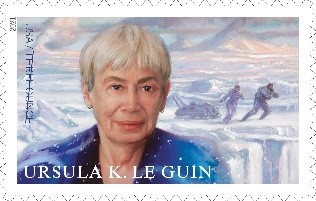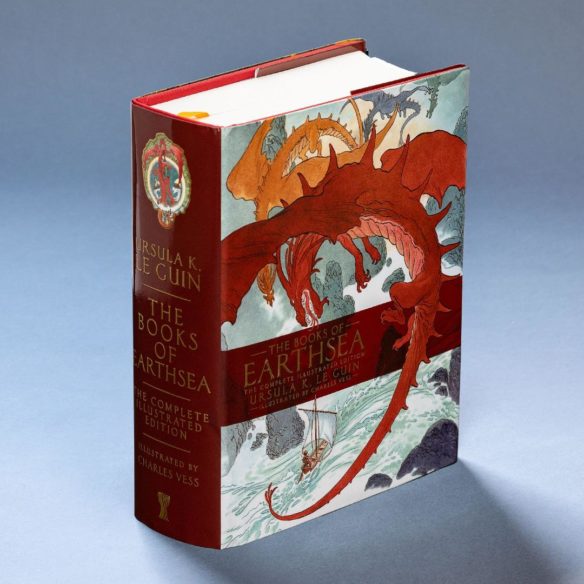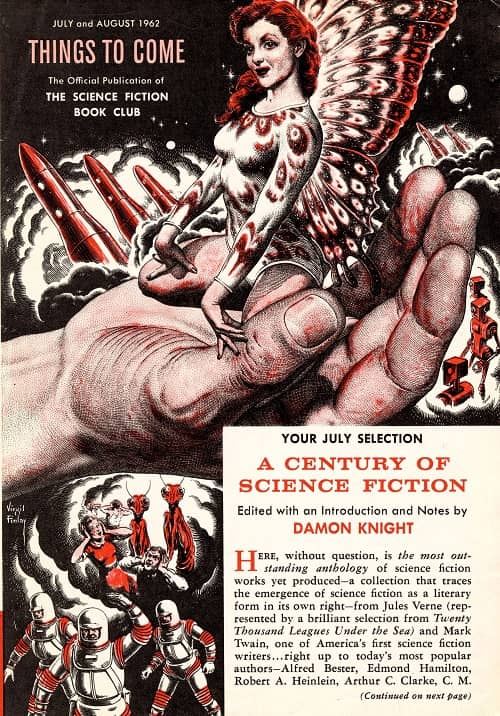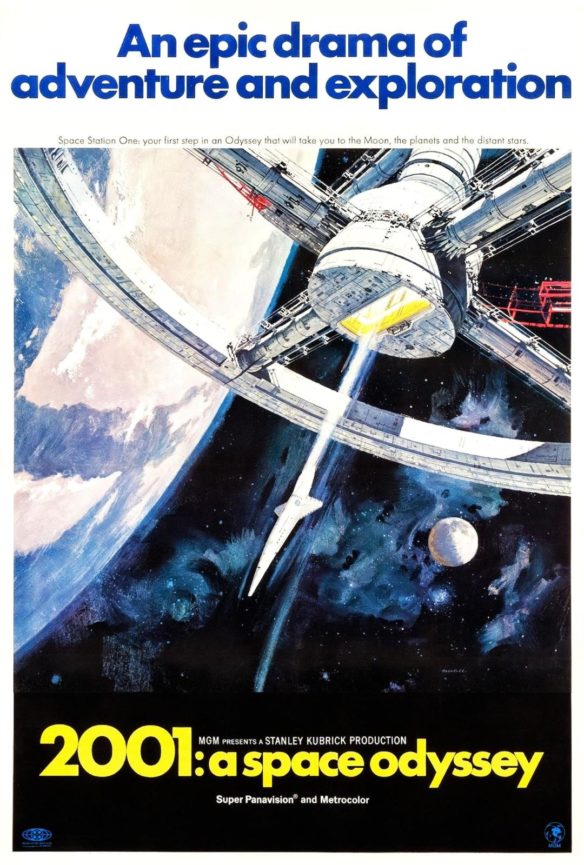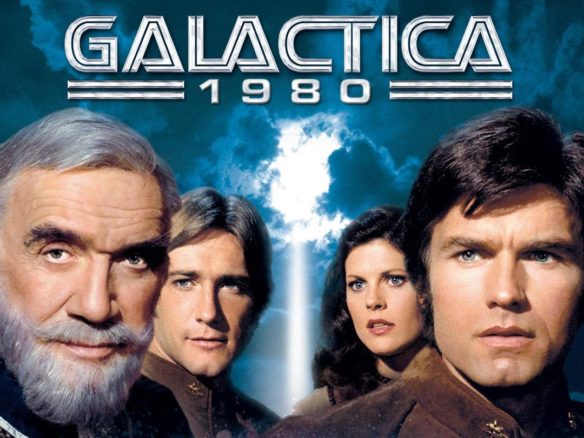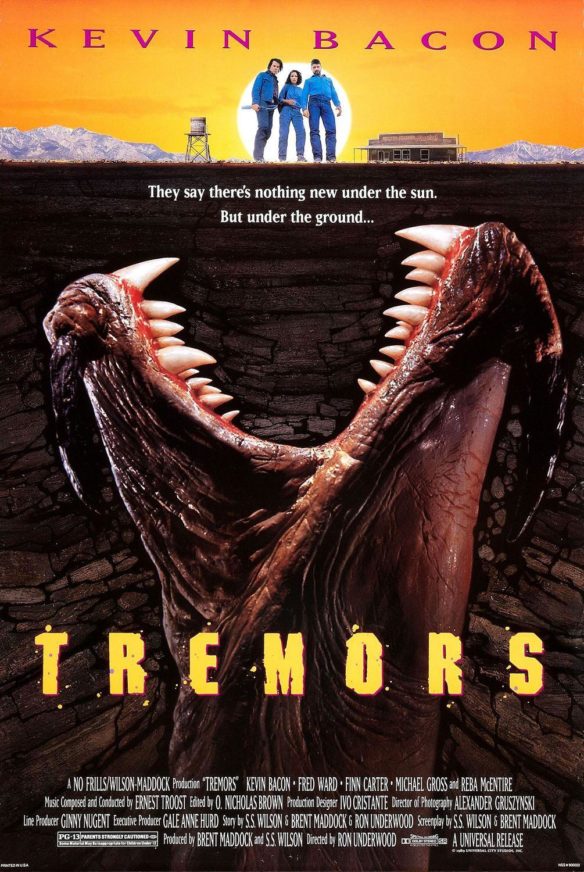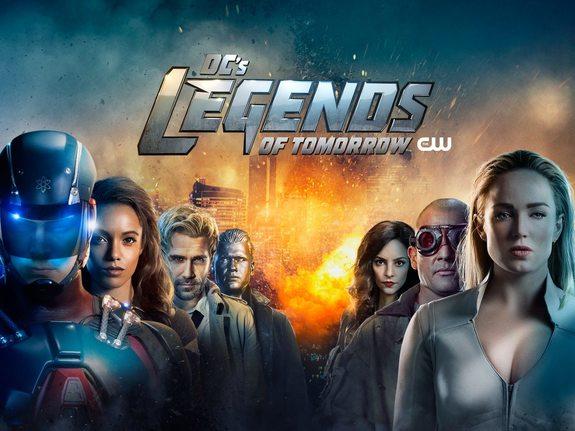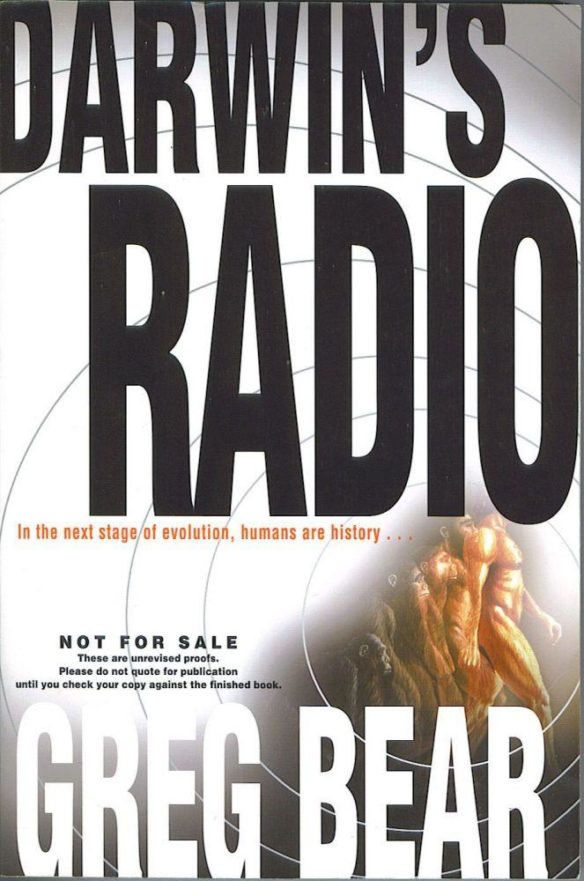(1) GRRM’S NEW PROJECT. George R.R. Martin is one of the executive producers of the forthcoming Dark Winds series based on the books by Tony Hillerman. The Hollywood Reporter lists the others:
…The series is created and executive produced by Graham Roland (Tom Clancy’s Jack Ryan) and stars Zahn McClarnon (Fargo), who is also an executive producer, and Kiowa Gordon (The Red Road). Vince Calandra (Castle Rock) is the showrunner and also an executive producer. Chris Eyre (Smoke Signals) will direct the pilot and executive produce. Other executive producers include George R.R. Martin, Robert Redford, Tina Elmo and Vince Gerardis. In a rare move, the production has secured permission to film on tribal lands in New Mexico….
Martin’s own announcement on Not A Blog says:
…I am thrilled to report, Joe Leaphorn and Jim Chee are returning to television.
We just got word from AMC that they are greenlighting DARK WINDS, based on Tony’s novels about the two Navajo tribal policemen. The first season will be six episodes long, adapted (largely) from LISTENING WOMAN, one of my favorite books in the series. If we get the viewers. more seasons will follow, and more books will be adapted.
…DARK WINDS will be filmed in and around Santa Fe and Gallup, and on the Navajo reservation, and based out of the Native-owned Camel Rock Studios (the former Camel Rock Casino), right here in the Land of Enchantment. Filming will begin in August, and continue — we hope — for many years.
Bob Redford and Chris Eyre have put together a great team (with a little help from yours truly), and we hope to make a great show, one that truly captures the magic of this very special place. Look for DARK WINDS on AMC in 2022.
(2) EYEWITNESS TO SFF HISTORY. Alec Nevala-Lee introduces the video of his interview: “Talking with Barry Malzberg”.
In the course of researching my book Astounding, I got to know the author Barry N. Malzberg, who by any estimation has had one of the most singular careers in all of science fiction. Over the course of three sessions in July 2019, I interviewed Barry about his life and work in a conversation that ended up lasting close to two hours, which I’ve finally put online. We spoke about his influences and early career; his time at the Scott Meredith Literary Agency; the rise and fall of the softcore erotica market; his friendships with Dean Koontz and Bill Pronzini; his brief stint as editor of Amazing Stories magazine; his encounter with the editor John W. Campbell; and the origins, legacy, and “bad karma” of his novel Beyond Apollo. I think there’s some good stuff there, so enjoy! (If you get the chance, you might also want to check out my recent interview with the science fiction podcaster Mikel J. Wisler, in which we discuss a similarly broad range of topics, including my New York Times review of Project Hail Mary by Andy Weir.)
(3) BUHLERT ONLINE READING. Cora Buhlert will be taking part in the monthly Flash Fiction Night organized by Space Cowboy Books in Joshua Tree, California on Tuesday, July 13 at 6:00 p.m. Pacific US Time. It’s a free online event — register here.
Cora wrote at her blog:
I’ll be reading some science fiction flash fiction together with Andy Dibble and Douglas A. Blanc. It’s already the third Flash Fiction Night and you can watch recordings of the first two on the Space Cowboy Books YouTube channel.

(4) THE FUTURE’S NOT FAR AWAY. [Item by Martin Morse Wooster.] Kim Stanley Robinson took part in a forum about climate change moderated by Ezra Klein in the June 27 New York Times Magazine. Other panelists include Saul Griffith, Rhinna Gunn-Wright, and Shilela Jasanoff. Klein appeared pretty familiar with The Ministry of the Future. “What if American Democracy Fails the Climate Crisis?”
Klein: Stan, imagining outside the current context is your specialty as a science-fiction novelist, so I’m wondering what you think the weaknesses of our current systems are.
Kim Stanley Robinson: Well, we are stuck in an international system of nation-states, and we don’t have time to invent and institute any kind of alternative world governance, so we have to use what we’ve got. But we also have the Paris agreement, and climate equity was written into it so that developed rich nations were tasked with paying more and doing more and helping the historically disadvantaged and even colonized nations. Executing all that is, of course, a different story.
(5) LE GUIN. Andrew Porter sent this link to an article which he says surprisingly eluded him when The Guardian originally published it in March. It’s a review of the nonfiction book Le Guin completed during her last year: “Dreams Must Explain Themselves by Ursula K Le Guin review – writing and the feminist fellowship”. (The title essay appeared in Porter’s fanzine, and was collected in a 40-page chapbook of essays under the same title in 1975.)
In 1973 Ursula Le Guin was phoned by publisher and science fiction fan Andrew I Porter, trying to persuade her to write about herself in his magazine Algol. “Andy kept saying things like, ‘Tell the readers about yourself,’ and I kept saying things like, ‘How? Why?’” Standing in her hallway, with a child and a cat circling her legs, it seemed impossible to explain over the crackling connection that “the Jungian spectrum of introvert/extrovert can be applied not only to human beings but also to authors”. Le Guin knew that at one end of the spectrum there are authors such as Norman Mailer, who talk about themselves, and at the other, authors who, like her, need privacy….
(6) IT’S AROUND HERE SOMEPLACE. “Look: Long-lost ‘Wizard of Oz’ dress found in box at D.C. school” reports UPI. And it’s not quite as rare as you might at first believe. It’s the sixth version of Dorothy’s dress from the 1939 film known to still exist.
A long-lost dress worn by Judy Garland in The Wizard of Oz has been found decades later in a box at a university in Washington, D.C.
Catholic University announced in a news release that the dress, which was gifted to the school nearly 50 years ago by actress Mercedes McCambridge while she was serving as the drama department’s artist-in-residence, was found by drama department lecturer Matt Ripa in a box placed atop some mail slots near his desk.
Ripa said he had often gone searching for the dress during his free time after hearing about the long-lost item in 2014, but he was apparently beaten to the discovery by Thomas Donahue, a now-retired drama professor, who had placed the box in Ripa’s office before leaving the school last year.
Ripa said the box must have been placed atop the mail slots by someone, causing it to evade his notice until last month.
“As soon as I popped the top off the box, I knew what it was,” Ripa told The Washington Post. “I saw that blue gingham and I just started laughing and laughing. I mean, I’m still laughing. Because I was shocked, holding a piece of Hollywood history right in my hands.”
The school contacted Ryan Lintelman, entertainment curator at the Smithsonian’s Museum of American History, to verify whether the dress was authentic. Lintelman and two colleagues examined the garment and determined that it appears to be the real deal.
(7) SPEAKING OF. “Andy Serkis Is Returning To The Lord Of The Rings” – Giant Freakin Robot has the story.
Andy Serkis is going back to Middle Earth – but not in the way you might think. The actor, who has lent his voice to Gollum in The Lord of the Rings trilogy and the first Hobbit film, will be narrating J.R.R Tolkien’s work in a brand new series of audiobooks.
(8) ON THE TUBE. In The Space Review, Emily Carney and Dwayne Day give a very deep, spoiler-filled dive into the second season of For All Mankind. “Revisiting the past’s future: ongoing ruminations about ‘For All Mankind’”.
Emily Carney:
Another interesting aspect about “For All Mankind” is that the show includes women as equal characters with equal time in the show’s narrative. That probably owes to the show’s “Star Trek” heritage. But the show doesn’t really start out that way in season one: it begins with the Soviets beating the US to the punch, and shows how the US astronaut cadre responds to this defeat. By this point in the show’s timeline, women aren’t astronauts, so we see the show’s Deke Slayton imploring his men to “get mad,” “kick the dog,” and let loose during the weekend after the Soviet landing.
This is when we get to meet Ed Baldwin and Gordo Stevens, who were just mere kilometers from the lunar surface weeks before. At The Outpost, an astronaut hangout modeled on a long-gone bar not far from Johnson Space Center, the astronauts have an insane, alcohol-soaked party, which culminates in a group singalong to Jimmy Ruffin’s “What Becomes of the Brokenhearted?” In my mind, I think this was shown to compare how men coped with defeat and heartbreak versus how women—in the upcoming narrative—would cope with similar stressful situations. Ed Baldwin even briefly kneecapped his own career by opening up about his frustrations with NASA to a reporter. At any rate, by this point, women were wives and mothers in the “For All Mankind” universe, not astronauts or management.
Dwayne:
Yeah, that’s a good observation. Initially, it’s all machismo. It’s brave men and heroes. But that’s about to change very fast. And that makes the show’s title a bit ironic—it’s not about “man” after the first episode.
After the Soviet Union beats America to the Moon, the Americans respond by landing Apollo 11, which in this alternative timeline, nearly ends in failure. But the Soviets then follow up with another significant first when they land a woman on the Moon. We see one of the female characters—a young Mexican girl named Aleida—smile when she sees that a woman is on the Moon.
(9) MEMORY LANE.
1981 — Forty years ago, John Carpenter’s Escape from New York premiered. (That was how it was shown on-screen.) Starring Kurt Russell as Snake Plissken, this film was written by John Carpenter and Nick Castle. It was directed by John Carpenter, and produced by Larry Franco and Debra Hill. Supporting cast was Lee Van Cleef, Donald Pleasence, Ernest Borgnine, Isaac Hayes, Adrienne Barbeau, and Harry Dean Stanton. The film received generally positive reviews with Russell in particular finding strong favor with the critics; it did very well at the box office earning far more than it cost to produce; and audience reviewers at Rotten Tomatoes give it a seventy-seven percent rating which is far better than the thirty-nine percent rating the the Escape from L.A. sequel gets. It did not get a Hugo nomination at Chicon IV.
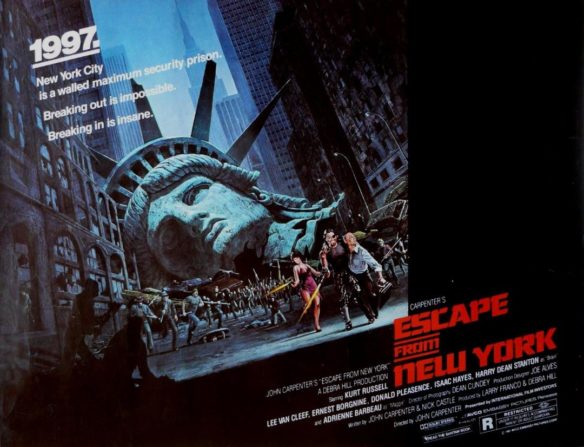
(10) TODAY’S BIRTHDAYS.
[Compiled by Cat Eldridge.]
- Born July 10, 1903 — John Wyndham. His best known works include The Day of the Triffids and The Midwich Cuckoos, both written in the Fifties. The latter novel was filmed twice as Village of the Damned. The usual suspects have an impressive selection of his novels including these titles though little of his short fiction is available, alas. The Day of the Triffids is currently a buck ninety-nine there. (Died 1969.)

- Born July 10, 1929 — George Clayton Johnson, He’s best known for co-writing with William F. Nolan the Logan’s Run novel, the source for the Logan’s Run film. He was also known for his scripts for the Twilight Zone including “A Game of Pool,” “Kick the Can,” “Nothing in the Dark,” and “A Penny for Your Thoughts,” and the first telecast episode of the original Star Trek, “The Man Trap.” (Died 2015.)
- Born July 10, 1931 — Julian May. She‘s best known for her Saga of Pliocene Exile (known as the Saga of the Exiles in the UK) and Galactic Milieu series: Jack the Bodiless, Diamond Mask and Magnificat. She was inducted into the First Fandom Hall of Fame at Sasquan. (Died 2017.)
- Born July 10, 1941 — David Hartwell. Encyclopedia of Science Fiction describes him as “perhaps the single most influential book editor of the past forty years in the American science fiction publishing world”. I certainly fondly remember the The Space Opera Renaissance he co-edited with Kathryn Cramer. Not to mention that his Year’s Best Fantasy and Year’s Best SF anthologies are still quite excellent reading, and they’re available at the usual suspects for a very reasonable price. (Died 2016.)
- Born July 10, 1941 — Susan Seddon Boulet. If you’ve read the American edition of Terri Windling’s The Wood Wife (which won the Mythopoeic Fantasy Award for Adult Literature Award), you’ve seen her amazing work. Or perhaps you’ve got a copy of Pomegranate‘s edition of Ursula Le Guin’s Buffalo Gals, Won’t You Come Out Tonight which also features her art. If you’re keen on knowing more about this amazing artist, see the Green Man review of Susan Seddon Boulet: A Retrospective. (Died 1997.)
- Born July 10, 1945 — Ron Glass. Probably best known genre-wise as Shepherd Book in the Firefly series and its sequel Serenity. His first genre role was as Jerry Merris in Jerry Merris, a SF horror film, and he’d later show up voicing Philo D. Grenman in Strange Frame: Love & Sax (“slated as the world’s first animated lesbian-themed sci-fi film”; look it up as it has a very impressive voice cast) and he showed up twice as J. Streiten, MD in Agents of S.H.I.E.L.D. Oh, and he was on Voyager playing a character named Loken in the “Nightingale” episode. (Died 2016.)
- Born July 10, 1953 — Hans Beimler, 68. He was co-executive producer, director, and writer on TekWar before co-producing a number of Next Gen episodes. He was involved in over a hundred episodes of Deep Space Nine in a numberof production roles too complicated to describe here. And he was one of the executive producers of the short-lived Dresden Files.
- Born July 10, 1970 — John Simm, 51. The second of the modern Masters on Doctor Who. He appeared in the final three episodes of the Time of the Tenth Doctor: “Utopia,” “The Sound of Drums,” and “Last of the Time Lords.” He also played Sam Tyler in the most excellent Life on Mars. And he played Macbeth atChichester Festival Theatre.
(11) TANGLED UP IN BLUE. Janice Marcus spotlights the latest (in 1966) work from oft-overlooked writer Rosel George Brown: “[July 10, 1966] Froth, Fun, and Serious Social Commentary (Sibyl Sue Blue)”.
Sibyl Sue Blue was not what I expected.
Set in the futuristic year of 1990, Rosel George Brown’s Sibyl Sue Blue takes place in a world both like and unlike today’s world of 1966. Sibyl is a tenacious and smart detective working for the city’s homicide department. When a series of bizarre ‘suicides’ start plaguing the city’s youth, she’s called in to investigate. As she follows the clues, she’s drawn into increasingly strange events, from trying alien drugs to being invited to join a spacefaring millionaire on an off-world jaunt.
Sounds like fun, right? Yet when Judith Merril told me the other day that she’ll be reviewing it in an upcoming issue of Fantasy and Science Fiction, she mentioned that “…under all the froth and fun and furious action, there is more acute comment on contemporary society than you are likely to find in any half dozen deadly serious social novels.”
She’s right!
(12) JUNGLE CRUISE. Yahoo! shows what the redesigned Disneyland attraction will be like: “Disneyland revamps Jungle Cruise ride after racism criticism”.
…The Jungle Cruise will officially reopen on July 16, with some changes, the park announced Friday. The ride, which takes passengers through Asia, Africa and South America, had been closed since the park itself reopened April 30, after being shutdown because the pandemic.
The company had announced in January that it would remove “negative depictions” of native people and pledged to make further changes to “reflect and value the diversity of the world around us.”
The ride, which originally opened in 1955, has been criticized, for example, for depicting the locals as headhunters.
“We’re excited to be building on the story of the Jungle Cruise to include new adventures that stay true to the experience we know and love, while adding more humor, more wildlife, and an interconnected story,” Chris Beatty, an Imagineer who worked on the renovations, said in a news release. “As part of creative development, we’ve also introduced characters from around the world and took a thoughtful approach to ensure accurate representation of cultures in our story.”
Beatty explained in behind-the-scenes video of the upgrade that one of the team’s goals was to “bring a sense of inclusivity” to the project. “We want to make sure that everyone that rides the Jungle Cruise can see themselves in the characters and in this experience.”
They also wanted to keep it classic and to highlight the “skippers,” the Disney cast members who make jokes while leading the faux tour of the area.
As part of the new storyline, chimpanzees have taken over a wrecked boat and the tourists have climbed up a tree in search of safety….
(13) RISKY BUSINESS. The Hubble Space Telescope suddenly went offline almost a month ago. Now “NASA will attempt a ‘risky’ maneuver to fix its broken Hubble Space Telescope as early as next week”.
…However, a recent NASA announcement suggests a glimmer of hope: The agency tweeted on Thursday that it had successfully tested a procedure that would switch parts of the telescope’s hardware to their back-up components.
This could pave the way for the payload computer to come back online, leading to the restart of Hubble’s scientific observations.
NASA reported the procedure could happen as early as next week, following additional preparations and reviews. The telescope and the scientific instruments on board remain in working condition.
But the switch will be “risky,” according to NASA astrophysics division director Paul Hertz.
“You can’t actually put your hands on and change hardware or take a voltage, so that does make it very challenging,” he told New Scientist.
…On June 30, NASA announced it had figured out that the source of the payload computer problem was in Hubble’s Science Instrument Command and Data Handling unit (SI C&DH for short), where the computer resides.
“A few hardware pieces on the SI C&DH could be the culprit(s),” NASA said.
Backup pieces of hardware are pre-installed on the telescope. So it’s just a matter of switching over to that redundant hardware. But before attempting the tricky switch from Earth, engineers have to practice in a simulator, the agency added.
NASA has rebooted Hubble using this type of operation in the past. In 2008, after a computer crash took the telescope offline for two weeks, engineers successfully switched over to redundant hardware. A year later, astronauts repaired two broken instruments while in-orbit – Hubble’s fifth and final reservicing operation. (NASA does not currently have a way to launch astronauts to the space telescope.)
[Thanks to Martin Morse Wooster, JJ, Michael Toman, Tony Gleeson, John King Tarpinian, Cat Eldridge, Mike Kennedy, and Andrew Porter for some of these stories. Title credit belongs to contributing editor of the day John A Arkansawyer.]


